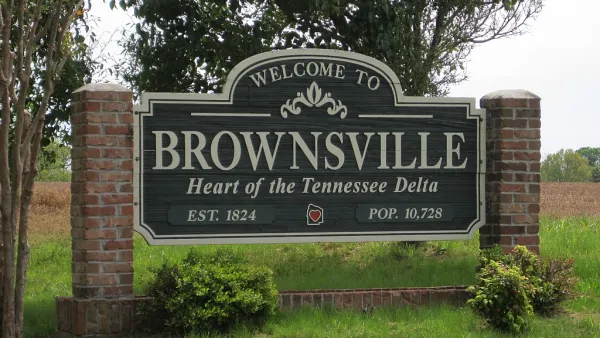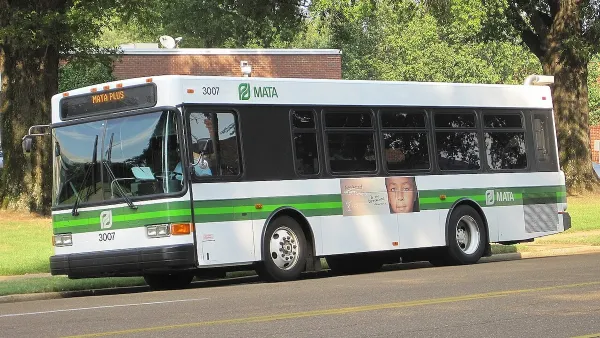With vast technology in this information age we are oversaturated with data. The trouble is planners aren't using this information nearly as much as they could be when it comes to economic development in underserved neighborhoods. The transportation sector collects data on travel patterns, behavioral choices, and modal efficiencies. With GIS technology, we can map socio-economic patterns, predict how rising sea levels will change our coastline,and evaluate development patterns. We even have technology to create more efficient trash collection routes and track real time bus movement for bus travelers. But do planners have a sufficient databank of information to demonstrate demand and purchasing power in underserved neighborhoods? Are we perpetuating disinvestment in these communities by ignoring the data? If data begets knowledge and knowledge equals power, where does that leave us?
We all struggle with ways to attract investors into disinvested communities. In Florida, planners almost always turnto Community Redevelopment Agencies or CRAs, which use tax increment financing to provide gap funding for private developments in unproven markets. And why? Because the traditional data sources, like the U. S. Census and Claritis indicate that households in these disinvested neighborhoods have less purchasing power. And if your development is not a typical residential or commercial product, there simply isn't any industry analysis on its potential demand. These two factors limit investment and the types of investments in poorer neighborhoods. But, critical thinkers are challenging these limitations and finding creative ways to link data to develop a better understanding of how disinvested communities spend their money and how cultural and arts activities encourage investment.
The non-profit company Social Compact has evaluated overlooked economic indicators to demonstrate a neighborhood's economic health. They use real time transactional data to track the daily spending habits of communities and to calculate buying power using non-traditional data sources like tax assessment, building permits, utility usage, bill payments, and consumer expenditure. And their findings are quite extraordinary. They've discovered that in over 400 underserved urban neighborhoods there are nearly 1.25 million additional residents and more than $35 billion in unrecognized income-22% higher than census trend projections. This irrefutable data has given disinvested places the power to attract valuable neighborhood investment without having to provide gap funding. The results are more self-sustaining and self-sufficient neighborhoods.
The Reinvestment Fund (TRF), a Philadelphia based foundation which finances urban real estate, business, and provides data analysis, and Social Impact of the Arts Project (SIAP), a Philadelphia based non-profit policy research group concluded that community based culture and arts can and does encourage private investment, but there is insufficient data to confirm this and no clear method for measurement. SIAP has also revealed that economists are not measuring demand for cultural uses like artist housing, which has a different demand than conventional housing and is more likely to reuse older and underutilized buildings in disinvested neighborhoods. The SIAP study hypothsizes that developments like artist housing engage the community, help create community identity, and signal market renewal. More data research to measure this link between cultural activity and neighborhood development, like Social Compact's research, could empower neighborhoods to attract cultural investment.
Shouldn't planners and economists cultivate this less conventional approach to data collection in disinvested communities by demanding more thorough research and engaging non-profit organizations that are already developing this information? The benefits are astounding. Until then we are doing our communities a great disservice.

Analysis: Cybertruck Fatality Rate Far Exceeds That of Ford Pinto
The Tesla Cybertruck was recalled seven times last year.

National Parks Layoffs Will Cause Communities to Lose Billions
Thousands of essential park workers were laid off this week, just before the busy spring break season.

Retro-silient?: America’s First “Eco-burb,” The Woodlands Turns 50
A master-planned community north of Houston offers lessons on green infrastructure and resilient design, but falls short of its founder’s lofty affordability and walkability goals.

Test News Post 1
This is a summary

Analysis: Cybertruck Fatality Rate Far Exceeds That of Ford Pinto
The Tesla Cybertruck was recalled seven times last year.

Test News Headline 46
Test for the image on the front page.
Urban Design for Planners 1: Software Tools
This six-course series explores essential urban design concepts using open source software and equips planners with the tools they need to participate fully in the urban design process.
Planning for Universal Design
Learn the tools for implementing Universal Design in planning regulations.
EMC Planning Group, Inc.
Planetizen
Planetizen
Mpact (formerly Rail~Volution)
Great Falls Development Authority, Inc.
HUDs Office of Policy Development and Research
NYU Wagner Graduate School of Public Service





























